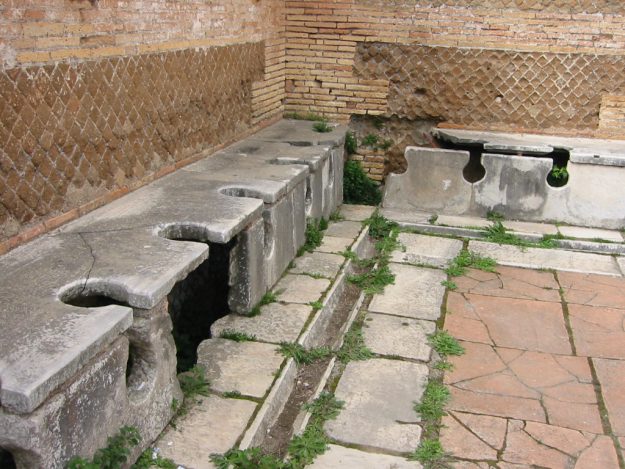The water closet was invented at least 3,000 years ago. Well, not in its present form, of course. But simple flush toilets were used in the early Mediterranean cultures of Crete, and then adopted by the Romans. Who handed them down to the modern Europeans much later. Isn’t it puzzling that the flush toilet is still considered the pinnacle of sanitation innovation in most parts of the world? Something that everyone somehow aspires to have. Are there any other examples of technologies that have become stabilised in the same manner? I mean, seriously; after three thousand years, couldn’t we really have come up with something smarter? Stabilised is hardly the term to give justice to the situation; fossilised is probably more fitting.

This is just one of the many examples of how we have come to take certain things about water for granted. The ways we use and manage this scarce and vital resource through technology, our practices, values and attitudes have developed over hundreds and thousands of years. Through time, we have established patterns and socio-technical systems, some of which are now increasingly difficult to change. In many cases, we have become blind to our own behaviour, since we have gotten so used to them. The human cognition is triggered by anomalies, not stability, after all. We simply stop registering patterns that remain the same year after year, decade after decade. Now, in a world that is changing fast, politically, economically, demographically and environmentally, we run the risk of not being able to adapt fast enough.
More of the doom-and-gloom, anyone? Actually, that is not what this blog is about. To the contrary; we think this blog is about curiosity. At this very moment in time, there is a need to reflect and rethink water, so as to start imagining other patterns. Other ways of managing, using, thinking and valuing water. What we think is needed is an enlarged space to explore these ‘others’ and to encourage a reflective practice in both academia and in the water professions. And there’s a couple of way of doing that.
One is by breaking up truths about who holds the “privilege of problem formulation ” – as it once was put by Swedish philosopher and author Lars Gustafsson. Let many different voices be heard!
Another is by moving your own frame of reference. If we are – for instance – to study the water and sewerage systems in Sweden from the viewpoint of say Kenya or Uganda, you also start seeing new things. In fact, you’ll note that there might be more innovation activity going on in places like Kampala, Nairobi or Dar es Salaam, than in most Swedish municipalities, when it comes to digital payments and business models, innovative distribution methods, container-based sanitation, nutrient recovery etc. Our own patterns suddenly becomes visible, and you start asking questions around them again. What you can’t see; you can’t change.
Finally, a bit of boldness is required. Stupid ideas are often just stupid. But we must still have the courage to say them out loud. Sometimes they are not stupid at all at closer look. Innovation history is full of examples where new and first-glance ‘stupid’ ideas later revolutionised entire branches. And change can come fast. Ask the managers of FACIT, a world-leading office machine manufacturer who missed the shift from mechanical to electronic calculators and rapidly went out of business…
In this blog we will ask of scientists, practitioners and others, to reflect on what could be done differently when it comes to water, but also what works already. Can we re-think some parts? What could a different future look like? How can we refill our stock of knowledge, practices, values and attitudes for a water-wiser world?
Please leave comments if you want to add your own perspective to a post on this blog. Or contact us on watercentre@kth.se
Dive in!
David Nilsson, Director WaterCentre@KTH
KTH Royal Institute of Technology



Thank you for this touching thoughts that put many more ways to critically see what we are practicing today and not taking it for granted (just because we feel OK with! – kind of comfort zone situation), but rather as what is going on now will be the base for the coming future, here comes our responsibility to consciously percive our present ways of managing water resources, our uses behaviour and what we dispose into the nature!
For me as one who experiance living in a water scarce arid zone, knowing the potential of what we have (although it may look not enough) but it is a matter of wise management; for me I consider percieving the sense of risk OR just the desire of change to better situation could be the motive for innovation and change. Befor all we need to always remember that we are somehow responsible for the coming generation’s future with what we do today.
Thanks Hamid. Great to hear you liked it. There’s a lot more to talk about when it comes to how we stop seeing structures around us just because we live in the midst of it. It’s human. But we need to retain an ability to “critically see” what is there, just like you point out.